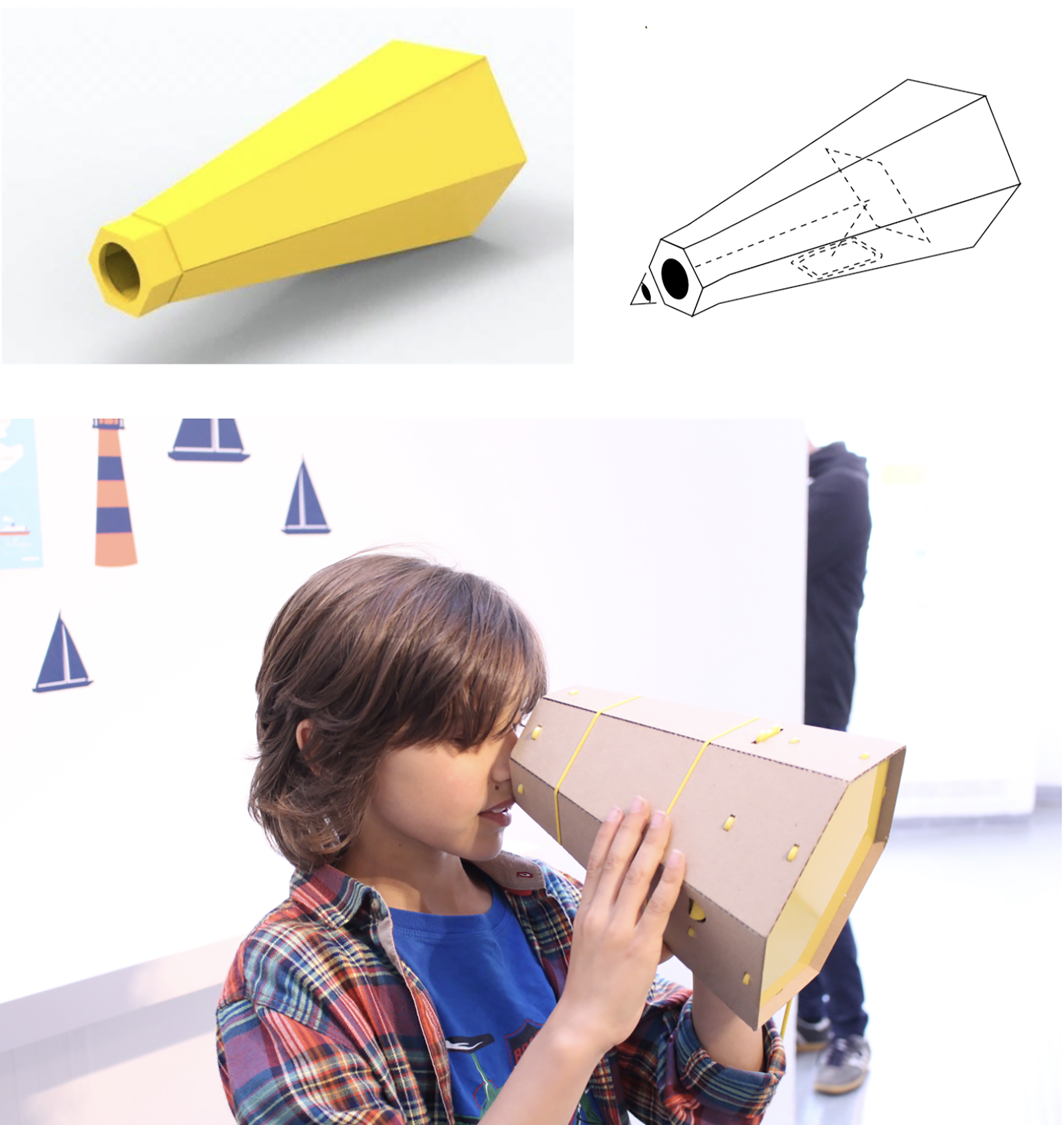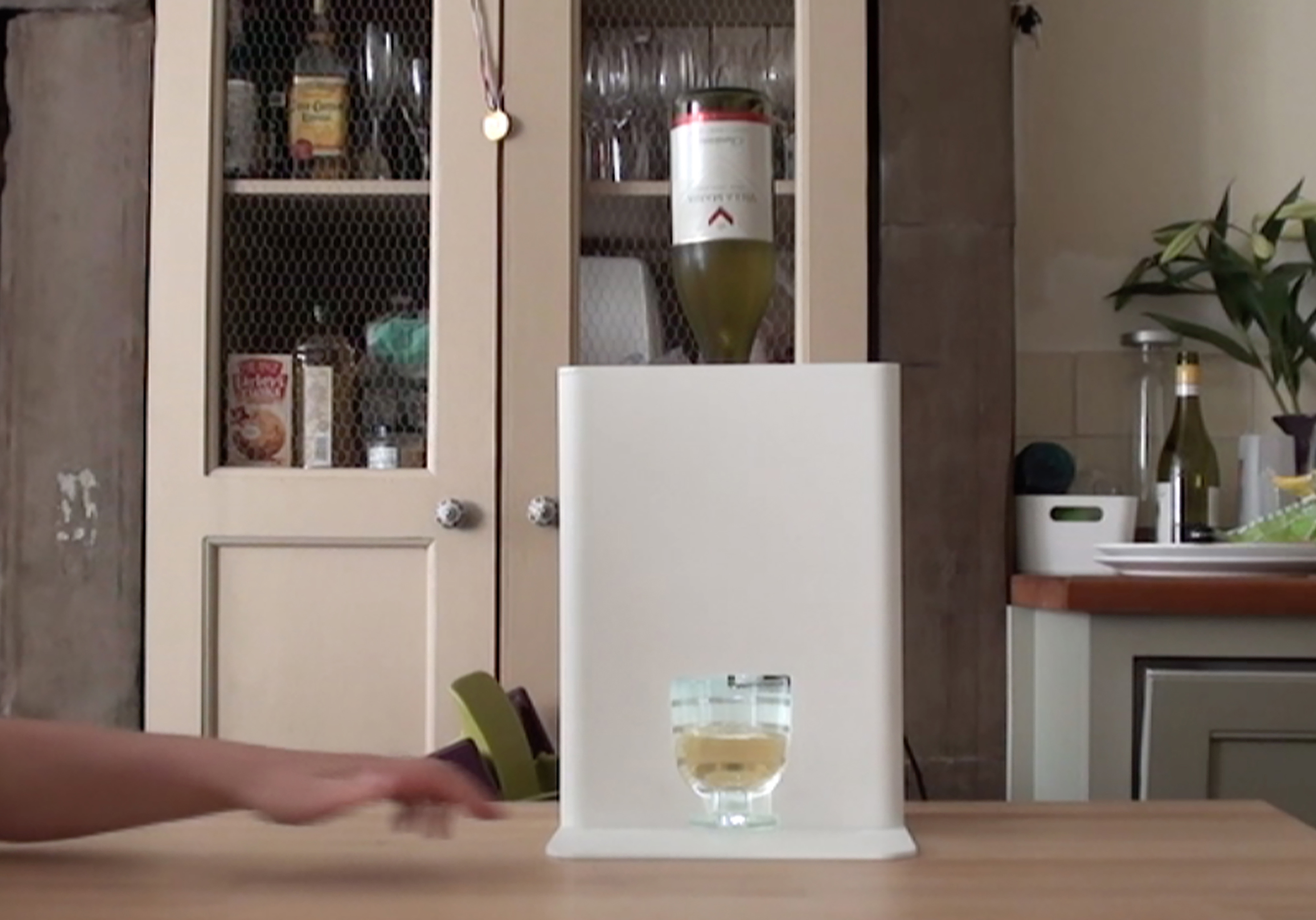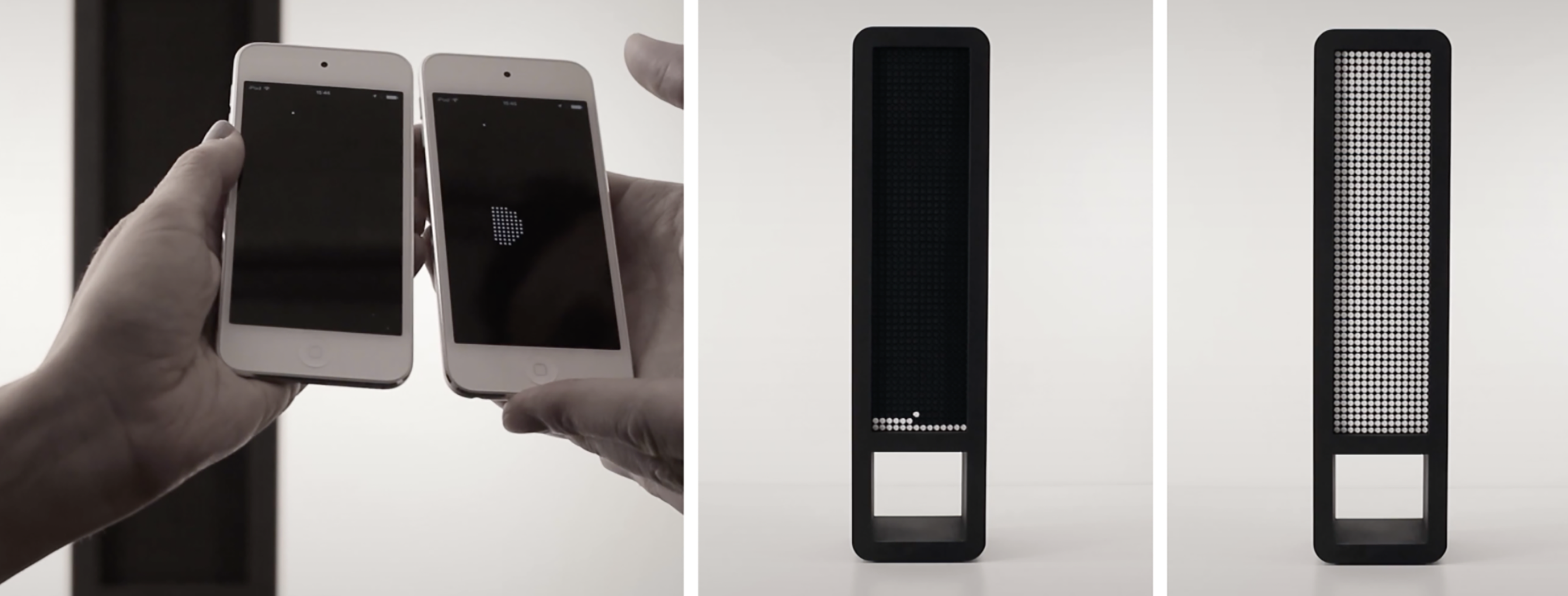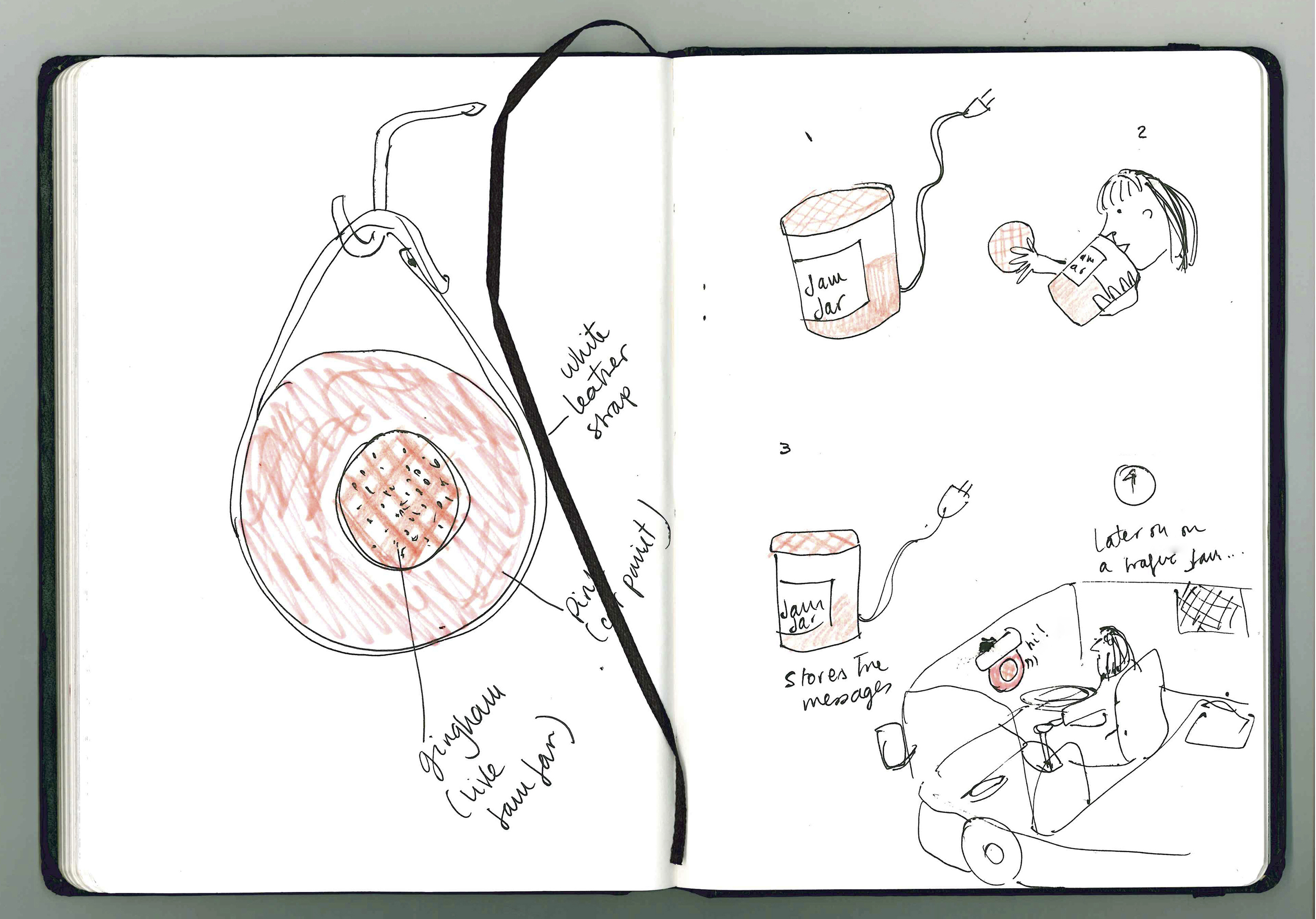Family Rituals 2.0
From 2013 to 2016 I worked at the Royal College of Art’s Helen Hamlyn Centre for Design as Research Associate for the Family Rituals 2.0 project. This multidisciplinary research investigated the value of rituals in families regularly separated due to work travel, and the possibilities for digital technologies to explore this space.
Funded by the EPSRC, the work was in collaboration with David Chatting and David Kirk (Newcastle University) and Jo-Anne Bichard (Royal College of Art).
Following design-led ethnographic work that identified existing family rituals, we created five bespoke ritual machines that reinterpreted these for periods of separation. Each machine lived with each family for a period of time, allowing us to find out about the role of technologies and rituals in family life.

Cultural Probes for participants
Ritual Machine 3: Connecting Through Housework
This Ritual Machine was created for a family, a couple with two teenage children, who spend blocks of time of two or three months of the year separated. The father, an academic, has two homes: one in the UK, where he works (his ‘work-home’) and one in Sweden, (his ‘home-home’). One of the significant rituals we identified in our ethnographic work, was the father’s involvement in domestic chores, which intensifies while he is in Sweden, but that is very much missed while he is in the UK. Although they have regular Skype breakfasts, during which they discuss home logistics, his interaction with the house maintenance is only virtual while he is away.
This Ritual Machine, a robot vacuum cleaner, transforms the father’s movements when he is in the UK into the movements of the robot vacuum cleaner in Sweden. Through the activities of the robot: his family in Sweden can recognise some of his routines while he is away, while representing his contribution in the house cleaning. This machine raised questions about the possibilities for artefacts to stand for those who are absent, and the effects of the possible disruption of separation and reunion patterns that already form an important part of the family’s dynamic.

----
Ritual Machine 5: Where Are You?
Our fifth family is a couple with their 8 year-old son and their dog, living in Cornwall. Both parents travel regularly by car for work, although the father tends to stay away overnight more regularly. The couple moved away from London after their son was born, in search of a healthier lifestyle. One aspect we immediately responded to during the ethnographic phase was their love of their geography and outdoors, and the way in which their son communicated with his parents when they were away. One interesting game they developed consisted of the father taking a soft toy with him on his trips and sending photos to his son of the teddy in various landmarks.Ritual Machine 5 consists of an electronic telescope for the son that can be pointed in any direction, showing an interactive map following his parents’ travels. With a paper map, he can mark his parent’s locations as they move.

---
Publications:
-Making Ritual Machines: The Mobile Phone as a Networked Material for Research Products. David Chatting, David S. Kirk, Abigail C. Durrant, Chris Elsden, Paulina Yurman, Jo-Anne Bichard. Proceedings of the 2017 ACM CHI Conference on Human Factors in Computing Systems, Denver, Colorado. https://doi.org/10.1145/3025453.3025630
-Ritual Machines I & II: Making Technology at Home. Kirk, D., Chatting, D., Yurman, P., Bichard, J. May 2016 CHI ’16: Proceedings of the 2016 CHI Conference on Human Factors in Computing Systems. https://doi.org/10.1145/2858036.2858424
-Designing for Family Phatic Communication: A Design Critique Approach. David Chatting, D., Kirk, D., Yurman, P., Bichard, J. British HCI 2015, July 13 – 17, 2015, Lincoln, UK. https://doi.org/10.1145/2783446.2783566
-Design-Led Inquiry for Mobile Lives. Konstantinos Kazakos, David Kirk, Abigail Durrant, David Chatting, Paulina Yurman, Jo-Anne Bichard, and Jaemin Paik. 2015. . In Proceedings of the 33rd Annual ACM Conference Extended Abstracts on Human Factors in Computing Systems (CHI EA '15). Association for Computing Machinery, New York, NY, USA, 2393–2396. DOI:https://doi.org/10.1145/2702613.2702630
-Capturing the Quotidian: what Home Life looks like at a Distance. Yurman, P., Chatting, D., Bichard, J., Kirk, D. Home-work: connections, transitions and the wider world. Centre for Studies of Home, One-day conference : 24/6/2014. The Geffrye Museum of the Home, London
-Quotidian Ritual and Work-Life Balance: An Ethnography. of Not Being There. Bichard, J., Yurman, P.. Kirk, D., Chatting, D. EPIC Conference, NY, 2014
-Family Rituals 2.0 (book).2015. Helen Hamlyn Centre for Design Annual Symposium, Royal College of Art, London.
Ritual Machine 1: Drinking Together Whilst Apart

This machine was designed for a family in Edinburgh: a couple and their young son. Our ethnographic work revealed shared pleasures together and frustrations when separated. A shared pleasure was the couple’s enjoyment of “having a drink” together, at the end of the day, when their son is finally asleep and all the chores have been done. This Ritual Machine has a beer bottle opener that is connected, through a phone, to a wine dispenser at home. On opening a bottle of beer while on a work trip, the machine pours a glass of wine, thus interpreting a ritual that usually takes place when both participants are together at home. The machine questions whether activities people enjoy together can be kept when separated, and if the spontaneous nature of this family custom can be maintained.

-------
Ritual Machine 2: Anticipation of Time Together
This machine counts down to a significant event. The couple in this family live in London but are regularly separated due to work trips. They often take a holiday together and look forward to these trips of reuniting. The anticipation of being together again and going on holiday, became the focus for the design of this Ritual Machine. Our ethnographic work revealed our participants’ preferences for minimalistic and monochromatic decor, which the design of this Ritual Machine needed to meet. Inspired by this insight and by the aesthetics and kinetic tension in flip boards from airports and train stations, where there is a build-up of expectation induced by the mechanical movement of letters, this Ritual Machine alludes to the sense of excitement associated with travel. The anticipation for the mechanical cascading of the dots is analogue to the anticipation of the next trip or time together.

-----
Ritual Machine 4:
Ritual Machine 4 was created for a female lorry driver, her husband and their six children. When driving her lorry, Lisa often finds cards and notes that the children have sneaked in her bag. These are welcome little mementoes from home that she cherishes, as she is on the road most of the week. In a harsh work environment, she has found ways to express her style through homely touches to the lorry cab, often in pink, her favourite colour. Like many drivers, one aspect of her work that she dislikes is being stuck in traffic jams. Even though Lisa is on the road most of the week, connecting to home on a regular basis is important and she likes to know of the daily home activities like homework, bedtime, etc.
This Ritual Machine hangs inside the cabin of Lisa’ lorry. It contains a speaker that works in conjunction with a jam jar, left at the kitchen at home, where the family can leave voice messages for Lisa to play in her truck cabin. The design and aesthetics of this machine aim to reflect her femininity through her love of pink and gingham, in a predominantly male work environment.


Early sketches for Ritual Machine 4
-----